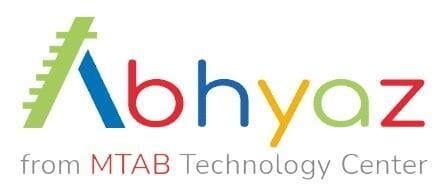Search engine optimisation … what a wonderful marketing technique! If you are a marketer, you certainly heard about it. In short, it is a marketing branch that aims to improve website visibility in search engine. How? It is all about content creation, keyword optimization and links building. As example, if you are selling shoes on a website, you will probably make keyword research. And then, you adapt your content to what your clients are typing in search engine. In other words, you will try to use the research terms of your potential customers, to be directly visible in their results.
Now, it is easier said than done. Especially if you are just starting with SEO.
You are certainly aware of increasing online competition and emerging trends. It is a never-ending story: strategy creation, launching, results monitoring. Your repeat it over and over.
But now, how to make it? What are the exact steps to follow?
That is what we will discuss in this article. Indeed, you will find some tips to apply, and even clear examples. However, keep in mind that SEO is a broad subject. Today, we will focus mainly on keyword optimization and selection.
We will present it in a portfolio form. So, you can use it not only to implement it directly in your firm, but also to approach recruiters.
Let’s take a closer look at keywords strategy.
How build a keyword strategy step by step?
How build a keyword strategy step by step?
•Define your goal
•Define your goal
Well, that is not surprising. SEO can be used at varied steps in the marketing funnel. Do you want to lead new traffic to your website? Or do you aim to increase sales? Each web page can have a different purpose. And that can strongly impact your terms. Moreover, the audience is also the key aspect of your keywords plan. As an example, when you communicate with professionals you do not use the same vocabulary you do with students. Is it not?
On the other hand, your SEO methodology will depend on the stage of your company too. For example, if you are advanced, you can improve an existing plan, or to push specific products according to seasons and past data. And if you are at the beginning, you will probably run tests to get first information about search behaviours of your competitors and potential clients.
In the case of Abhyaz, the website was in the update process and then did not get any keywords and descriptions in background sections. Hence, the primary task was to analyse the market and to choose the first keywords that could make the pages much more visible. Naturally, the goal was to attract more people interested in internships or scholar projects.
•Understand the SEO in your environment
•Understand the SEO in your environment
Now, it is time to understand your work context. In practice, you can get the ideas and objectives of other departments or associates. But after that you will probably need to discover the SEO limits and possibilities on your own. What are the available tools? How to use them? What is the structure of the content to boost? In the current labour market, proactivity is strongly required. Therefore, it is possible that you will be confronted with tests and research, before you analyse the competitors and audience behaviours. Remember, you are considered as a SEO expert. And you will optimise, try new technologies, and so on.
In the given portfolio, the main tool is the Zoho website builder. For example, this is here that you can define which titles and meta descriptions will be visible when your website appears in search results. To learn more about it, visit their SEO guide.
•Understand the market
As your objectives and tools are clear, let’s move on to the market analysis. This process is extremely important because this is where you will connect your content with your users. You will understand which keywords can bring you in first results when your potential customers will be looking for your type of services or products. But let’s take it from the beginning.
The first stage is to analyse what is effective on your website, before adding keywords and descriptions in the background. When you publish your pages, you can get visitors without SEO optimizations. Then, it could be beneficial to keep those strong points in later changes.
In Abhyaz example, you can read that we applied platforms to detect the top keywords and its traffic.
The second stage is to observe how users research your type of products. With this technique, you will better bridge the gap between the frequently used words and how you formulate your texts on your site. Thus, you will see how your potential audience expresses requests, and where you could appear more while including the new adequate terms.
For instance, you can upload free extensions to your browser. It will let you find other phrases that are related to your original keywords and are also frequently entered. In addition, you can also check its difficulty to estimate how you will rank with it.
The third stage is to examine your competitors. Which keywords and meta descriptions do they use? In the presented example, we applied two methods. At first, we researched their varied pages to analyse their meta descriptions. And then we used some websites to collect their top keywords. In fact, this method is similar to what we applied in the first step. But here, we focus on websites out of our firm.
Last but not least, it is necessary to confront all collected information from previous processes. As mentioned previously, SEO imposes limits. As a consequence, to be effective you have to respect a minimum and a maximum number of words. Now, how to define which words you should keep or not? The answer is simple. Test it and see which results are the most beneficial! The first tip is to type it in Google Search and to read which pages it shows you. For instance, if you want to boost your internships, the most valuable keywords would be those that show traineeship propositions in a general way. Some formulations are mainly used to find concrete services, and others respond to tips, such as “How to find an internship?”. So, including words that do not match audience preferences and expectations does not really make sense. Do not you agree? Again, here everything depends on the purpose of specific pages.
On the other hand, it is worth it to verify the popularity of your terms too. The ideal scenario is to be strongly present in search engine expressions that are used by a huge part of your target audience. Do you see this sweet spot? Again, there are a whole bunch of tools. But in the discussed example, we focused mainly on Google Trends. Why? Indeed, it is free, compares the popularity of several keywords at the same time and offers various functions to narrow your analysis, such as selecting a specific country or time frame. In our work, it was beneficial to compare synonyms and to emphasise the offers that could be the most researched.
•Launch and observe
Obviously, the last point is to launch your plan, and then to follow it up. As mentioned in the introduction, the market changes constantly. So, go even further, measure the results and propose adaptations. Play the marketing game and propose fresh ideas to your recruiters or clients.

